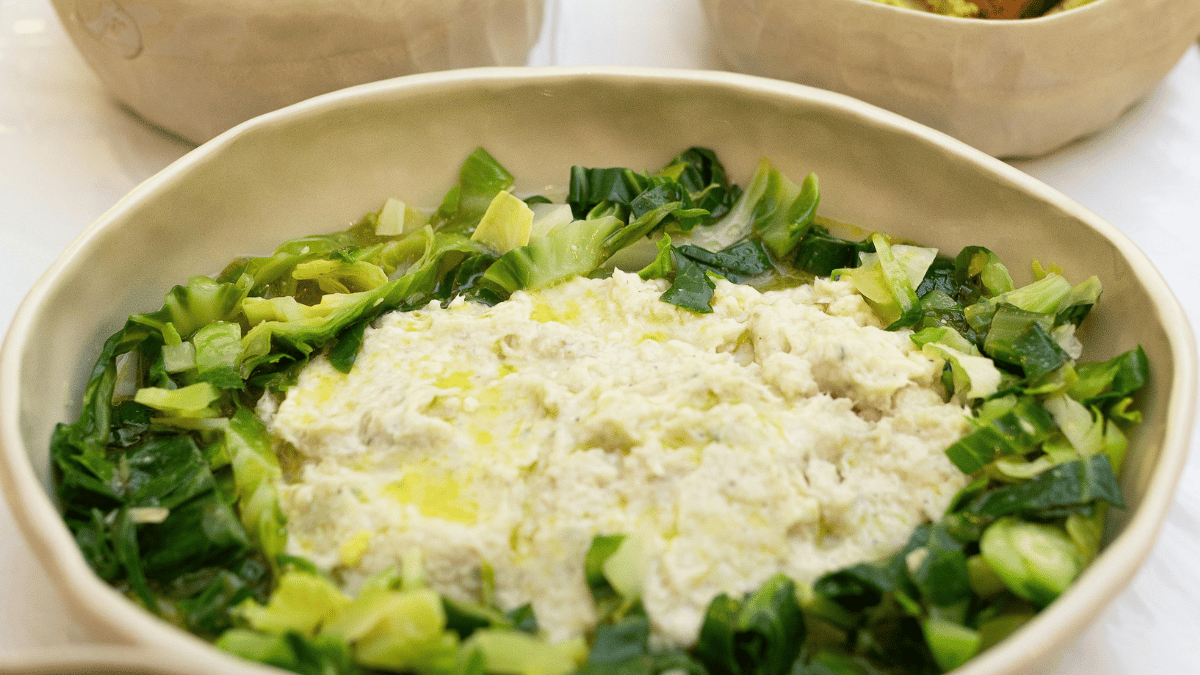The Best Plant-Based Recipes for African Cuisine in 2024

I’ve travelled from the south, east, west, and north of Africa. My interest has been in food, specifically plant-based African recipes.
Did you know that over 40% of traditional African dishes are naturally plant-based?
From the aromatic spices of North Africa to the hearty stews of West Africa, the continent’s cuisine has always celebrated vegetables, legumes, and grains in innovative ways.
Let me take you on a culinary journey through Africa’s most beloved plant-based recipes, perfected over generations!
Why African Cuisine is Perfect for Plant-Based Eating
African cuisine, known for its bold spices and earthy flavours, has many dishes that are naturally plant-based or easy to adapt.
The cuisine heavily incorporates fresh vegetables, legumes, grains, and unique spices—making it perfect for a plant-based lifestyle.
In many African cultures, plant-based staples like beans, lentils, yams, and rice are central to meals, providing abundant plant-based protein and fibre.
Traditional African cooking often features nutrient-dense ingredients such as millet, sorghum, collard greens, and sweet potatoes, which deliver vitamins, minerals, and antioxidants.
With a growing trend toward plant-based eating, African recipes make it easy to adopt a healthier lifestyle without sacrificing flavour.
Plus, ingredients like baobab, tamarind, and ginger bring unique tastes to plant-based dishes, allowing you to explore the continent’s culinary diversity one meal at a time.
Vital Ingredients for Plant-Based African Recipes
Cooking plant-based African dishes starts with a few key ingredients.
Here are some essentials that will help you bring authentic African flavours to your kitchen:
Legume and Beans
Black-eyed peas, chickpeas, and lentils are commonly used in African recipes for their heartiness and high protein content.
Starches and Grains
Ingredients like yams, plantains, millet, cassava, and rice are common across Africa, giving a satisfying base to many dishes.
Vegetables
Okra, tomatoes, sweet potatoes, eggplant, and leafy greens like collard greens are frequent stars in African plant-based cooking.
Spices and Herbs
African cuisine is known for its aromatic spice blends, including berbere (an Ethiopian blend), ras el hanout (a Moroccan blend), cumin, turmeric, and ginger.
Using fresh herbs such as cilantro and parsley can enhance the taste of your dish.
Oils and Fats
Traditional African dishes often use coconut milk or peanut oil, which adds creaminess and a unique flavour.
Sauces and Pastes
Ingredients like tomato paste, harissa, and peanut butter are vital in building African stews and curries’ rich, complex bases.
If you can’t find certain ingredients, you can often substitute similar items, such as sweet potatoes in place of yams or chickpeas in place of black-eyed peas.
Top Plant-Based Recipes from North Africa
North African cuisine offers bold, aromatic dishes well-suited for plant-based adaptations.
The region’s cooking often includes chickpeas, lentils, eggplants, and warm spices, making it easy to create flavourful vegan options.
Moroccan Chickpea Tagine
This hearty stew combines chickpeas with root vegetables like carrots and potatoes, plus spices like cumin, coriander, and cinnamon. It’s simmered until tender and often served over couscous.
Harira Soup
Known as a comforting dish in Morocco, this rich and filling lentil and chickpea soup is flavoured with tomatoes, cumin, coriander, and paprika.
Traditionally enjoyed during Ramadan, it’s rich and filling.
Eggplant and Tomato Stew
This dish is a great side or main course. It combines eggplants, tomatoes, garlic, and onions, all simmered with spices like cumin and cinnamon, for a deep, savoury flavour.
These North African dishes can be served with warm, crusty bread or couscous, which soaks up the flavourful sauces and adds a touch of authenticity to your meal.
Delicious Plant-Based Recipes from West Africa
West African cuisine brings vibrant and earthy flavours that are easy to adapt to a plant-based lifestyle.
Many traditional dishes feature peanuts, root vegetables, and spices that add depth to every meal.
West African Peanut Stew
This classic dish combines peanut butter, tomatoes, sweet potatoes, and kale for a creamy, slightly sweet, and savoury stew. It’s often served with rice or bread. This has been my favourite.
Jollof Rice
This well-loved West African meal consists of rice cooked in a tasty tomato sauce with onions, bell peppers, and spices. Variations exist across countries, so adjust the seasonings to your taste.
Yam Porridge (Asaro)
This comforting and filling dish is made from yams. It’s cooked in a sauce of tomatoes, bell peppers, and onions. It’s seasoned with thyme and bay leaves and can be garnished with leafy greens or plantains.
These West African recipes are satisfying and flavourful, bringing out the earthy richness of ingredients like peanuts, yams, and tomatoes.

Pexels/Asker Abayev
East African Plant-Based Recipes
East African cuisine showcases fresh, tropical ingredients like coconut milk, plantains, cassava, and fragrant spices like cardamom and cloves.
Ugandan Matoke (Stewed Plantains)
It is filling, a simple and savoury stew made from green plantains, onions, tomatoes, and spices. When cooked, it has a unique, slightly tangy flavour.
Lentil Curry from Ethiopia
This curry is typically made with lentils, tomatoes, garlic, and spices, especially the famous Berbere spice blend.
It’s often served with injera, a spongy flatbread that soaks up the curry’s flavour.
Since visiting Addis Ababa, I have included injera in my dishes. Just add a little bit of jalapeno to your curry. Your taste buds will give you a mouth hug.
Vegetable Samosas
Popular across East Africa, samosas are filled with spiced potatoes, carrots, and peas, then wrapped in dough and fried to a golden crisp.
Pair these dishes with sides like ugali (cornmeal porridge) or injera for a satisfying East African meal.
Plant-Based Recipes from Southern Africa
Southern African cuisine brings its unique take on plant-based meals with local ingredients and comforting flavours.
South African Chakalaka
A spicy vegetable relish made with onions, bell peppers, tomatoes, and carrots. It’s seasoned with spices like curry powder and chilli, giving it a warm and spicy kick.

Chakalaka dish
Pumpkin Curry
Southern African pumpkin curry is mildly spiced, with a touch of coconut milk for creaminess. This dish works well as a side or a main course when served over rice.
Pap and Beans
Pap, a maize porridge, is a staple in Southern Africa. It is often paired with beans in a savoury tomato-based sauce, making a nutritious, filling meal.
These dishes reflect the rich, diverse flavours of Southern Africa and highlight the region’s love for vegetables and hearty, satisfying meals.
Modern Adaptations of Classic Recipes
Contemporary African cuisine embraces innovation while honouring tradition. Modern chefs create fusion dishes like Ethiopian spiced quinoa and West African-inspired Buddha bowls.
These adaptations make African flavours accessible to global audiences while maintaining authentic taste profiles.
Time-saving adaptations help preserve these culinary traditions in busy modern life. Pressure cookers speed up bean cooking times, while food processors simplify spice blend preparation. These modifications make African cooking more accessible without compromising flavour.
Nutritional Considerations
African plant-based cuisine naturally provides complete nutrition.
Legumes like lentils and chickpeas offer protein, while indigenous grains provide complex carbohydrates and minerals.
Traditional combinations often create complete protein profiles – for example, rice and black-eyed peas or injera with lentil stews.
Iron-rich ingredients feature prominently in African cooking. Dark leafy greens, legumes, and whole grains provide plant-based iron, while traditional preparation methods like fermentation enhance mineral absorption.
Vitamin C-rich ingredients like tomatoes and citrus are often combined with iron-rich foods, maximizing nutrition.
Tips for Adding African Flavours to Any Plant-Based Meal
If you’re inspired to bring African flavours to your plant-based meals, here are a few tips:
Spice it Up
To transform everyday dishes, use African spice blends like berbere, ras el hanout, and curry powder. These blends can elevate roasted vegetables, stews, and even pasta dishes.
Add a Signature Sauce
Try a peanut sauce or harissa for an African-inspired twist. These sauces are easy to make and pair well with grain bowls, wraps, and salads.
Think Plantains and Yams
Adding cooked plantains, yams, or sweet potatoes to your meals brings an African touch. Slice and roast them or add them to stews for a hearty addition.
Experiment with Sides
African-inspired sides like couscous, injera, and ugali make great accompaniments to any main course.
Add a small salad with a citrusy dressing to capture the freshness of East African cuisine.
By infusing these tips into your plant-based cooking, you can bring Africa’s rich, diverse flavours into your kitchen, creating exciting and healthy meals that celebrate the continent’s culinary heritage.
Conclusion
African cuisine offers a wealth of inspiration for plant-based eaters. Its focus on vegetables, grains, legumes, and spices creates delicious and satisfying meals.
Whether cooking a peanut stew from West Africa or a tagine from the north, these recipes excite plant-based eating.
Embrace the diversity and flavour of African plant-based recipes and start cooking!
And if you’re ready to dive deeper, check out our entire recipe collection or try one of the recipes above!

2 thoughts on “The Best Plant-Based Recipes for African Cuisine in 2024”